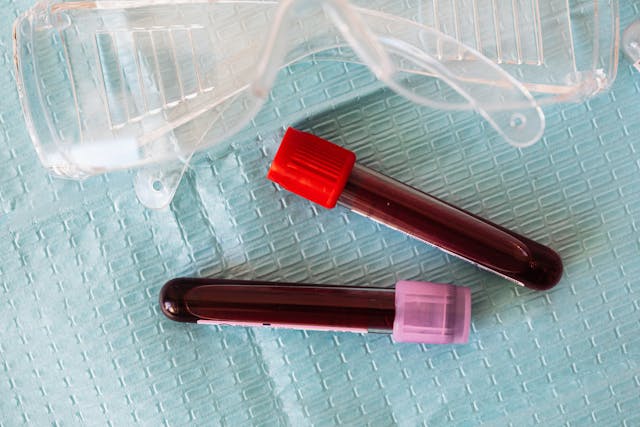
How quickly does your blood regenerate after you donate it? The blood volume will be back in 48 hours, but it will take four to eight weeks for the red blood cells to regrow.
When people donate blood, they usually give about 450 ml, which is about a pint. Depending on your size, that is about 10% of the blood volume that you have. The average person has about 70 ml of blood for every kilogram of body mass. This brings the average total volume of blood in your body to between 4.5 and 5.5 liters. A blood donation is a very small amount of that and will have no effect on you. You can lose up to about 30% of your blood and still function normally. Any more than that and you will start to have problems. So, a blood donation doesn’t have any noticeable effects. However, we obviously need as much blood as we have, so the body will very quickly start to regenerate the lost blood.
There are four parts to our blood. The majority of it, 55%, is plasma. Plasma is a liquid made up of water, sugar, fat, protein, and salt. Its job is to transport blood cells around the body and then to transport waste out of the cells. You need to keep your body hydrated to ensure that you have enough plasma to transport the blood cells. 44% of the blood is made of red blood cells. They are produced in the bone marrow and released into the blood. Red blood cells are made from stem cells in the bone marrow that can become white blood cells or platelets as well. Red blood cells are unique among our cells because they don’t have a nucleus, which means they can change shape to fit through any size capillary. However, because the red blood cell can change shape, it can get damaged easily and they have a lifespan of about 120 days. The job of the red blood cell is to transport hemoglobin, which carries oxygen to the cells and then carbon dioxide away from them. The last 1% is made up of white blood cells, which fight infections and invaders, and platelets, which are small pieces of cells that help blood clot at injury sites.
When you donate blood, your blood level falls by about 10%. That blood loss triggers your body to start making more blood. Your body does this in two different ways. The first way is to replace the volume of the blood. This is the first thing that happens and it takes about 48 hours altogether. Plasma is not made in any organ. It is made from water and salts that are absorbed through the digestive tract. When the volume of blood drops, the first thing that happens is receptors in the blood vessels sense this drop in pressure and they send a signal to the kidneys to hold onto water and salt. This water and salt is then slowly fed into the blood stream to replace the lost fluid. This happens straightaway, but it can take up to 48 hours before the blood volume is restored. It is also why people get thirsty after donating blood and why most blood donation centers give people a drink after they have donated.
The second thing the body does is to start making more red blood cells to replace the ones that have been lost. Your body notices that red blood cells have been lost by measuring the amount of oxygen in the blood stream. There are cells in the kidneys called peritubular cells that measure the amount of oxygen. When it is too low, as it will be after a blood donation, they make a protein called erythropoietin. This protein travels around in the blood until it reaches the bone marrow and there it instructs the bone marrow to start producing more red blood cells. Your bone marrow can make about 2 million red blood cells a second. That sounds like a lot, but there were about 3 trillion red blood cells in the 500 ml of blood that was taken for the blood donation. It takes about 4 weeks for all of those red blood cells to be replaced. After about 4 weeks, the plasma, red blood cells, white blood cells, and platelets have all pretty much returned to normal and it is ok to donate blood again. Although, most countries require you to wait about 3 months between donations just to be safe. And this is what I learned today.
Photo by Karolina Kaboompics: https://www.pexels.com/photo/medical-eyeglasses-and-full-of-blood-vials-on-diaper-4230620/
Sources
https://www.blood.co.uk/the-donation-process/after-your-donation/how-your-body-replaces-blood
https://www.hsa.gov.sg/blood-donation/blood-facts-and-figures
https://www.britannica.com/video/253594/How-much-blood-is-in-the-human-body
https://www.hematology.org/education/patients/blood-basics
https://www.msdmanuals.com/en-jp/home/blood-disorders/anemia/anemia-due-to-excessive-bleeding
https://www.ncbi.nlm.nih.gov/books/NBK531504
https://www.apollo247.com/lab-tests-queries/how-many-red-blood-cells-are-there-1-litre-blood_ltu
